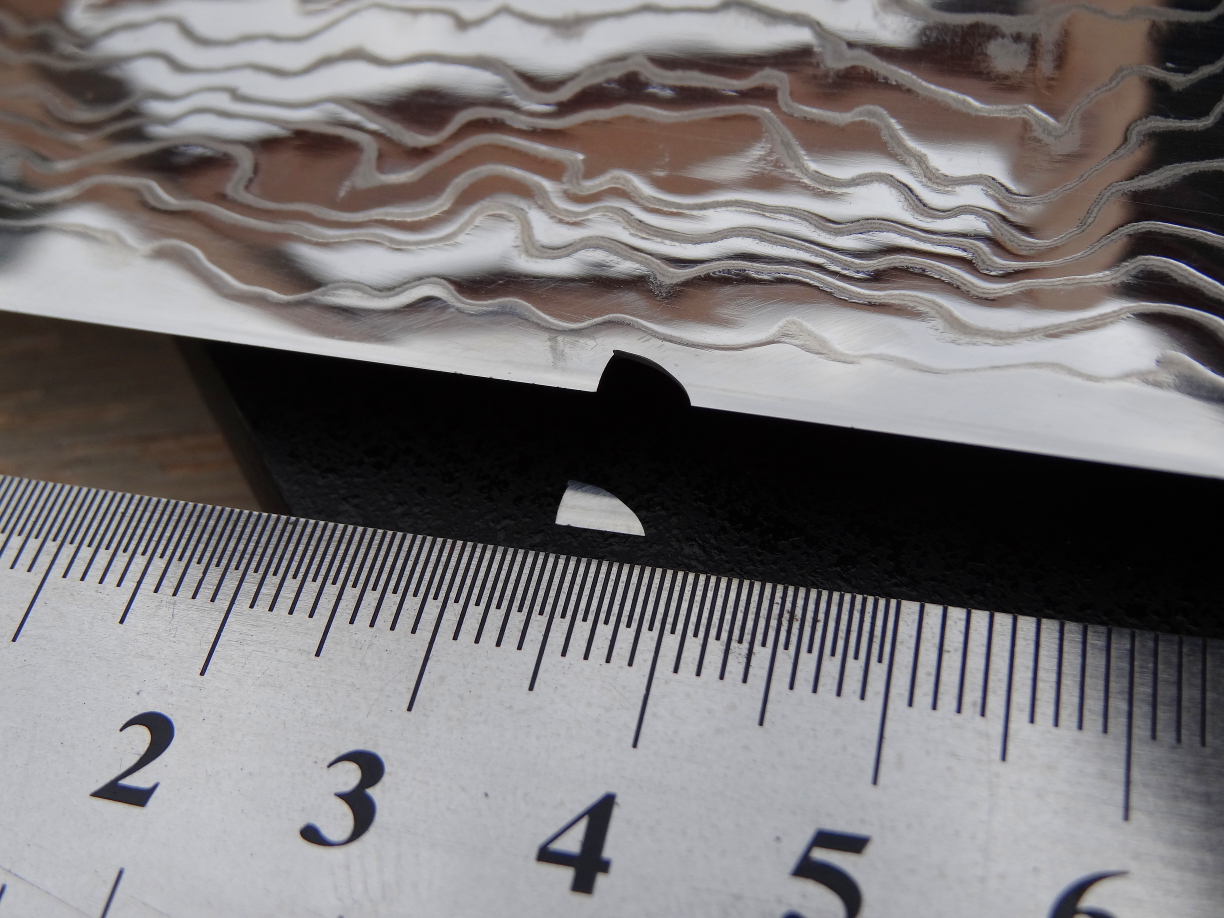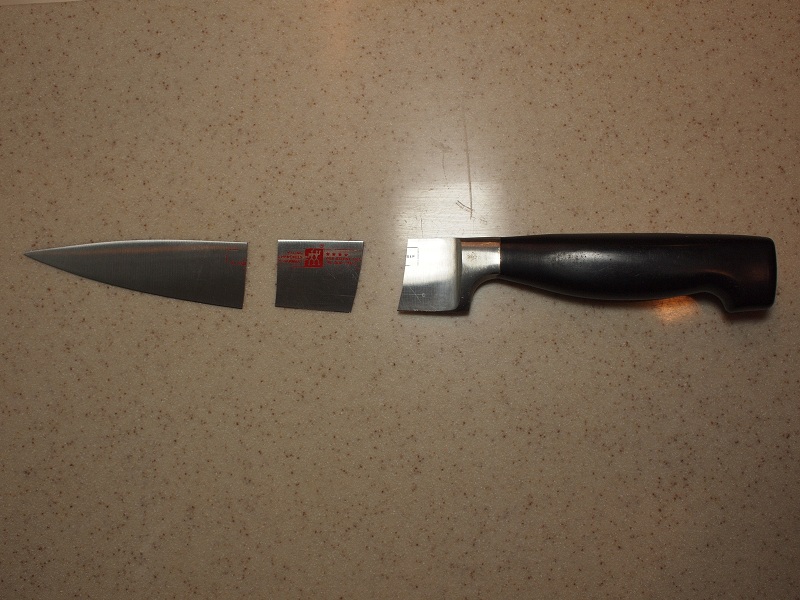Sorry, just for clarification. The benefit of honyaki is not that strength/toughness is added, but that toughness does not go down when heat treating a monosteel blade to high HRC?
First of all, strength is not similar to toughness and they can even be inversely related in some situations.
Secondly, honyaki blades are not necessarily tougher/less likely to "break" than monosteel, and actually I would say in general, because of the way they are heat treated and tempered they are often less "functionally" tough than the majority of monosteel blades heat treated at the same high hardness that are heat treated with temperature controlled equipment. Honyaki blades have an area of the spine that is unhardened steel. This would likely stop a crack from propagating if the crack reaches that area of the blade. Of course, if this happens the blade is already completely ruined. Knives break near the edge or at the tip in 99% of the cases and the toughness of the spine rarely matters for the end user (it does matter for the knife maker during manufacture). Carbon steel at HRC 64-65 is quite tough unless heat treated in a way that compromises toughness and at most blade cross-sectional geometries, the toughness of the spine is a moot point. From my understanding the main reason the spine is left unhardened on honyaki blades is A- because it's difficult to do, is traditional, and looks pretty, and B- because it allows some straightening of the blade during manufacture if it warps.
Also, there is another way to toughen the spine of the knife than the "honyaki" approach that make the spine even tougher than the unhardened steel of the honyaki method and also preserves resilience and rigidity. Differential tempering.
Additionally, knives without either kind of softened spine can be excellent top-shelf knives- everything depends on the intended use, geometry, alloy, and heat treatment.
In my mind it is not very productive to oversimplify the effects of the basic knife blade constructions. Great knives can be made all of these ways.
~Luke






